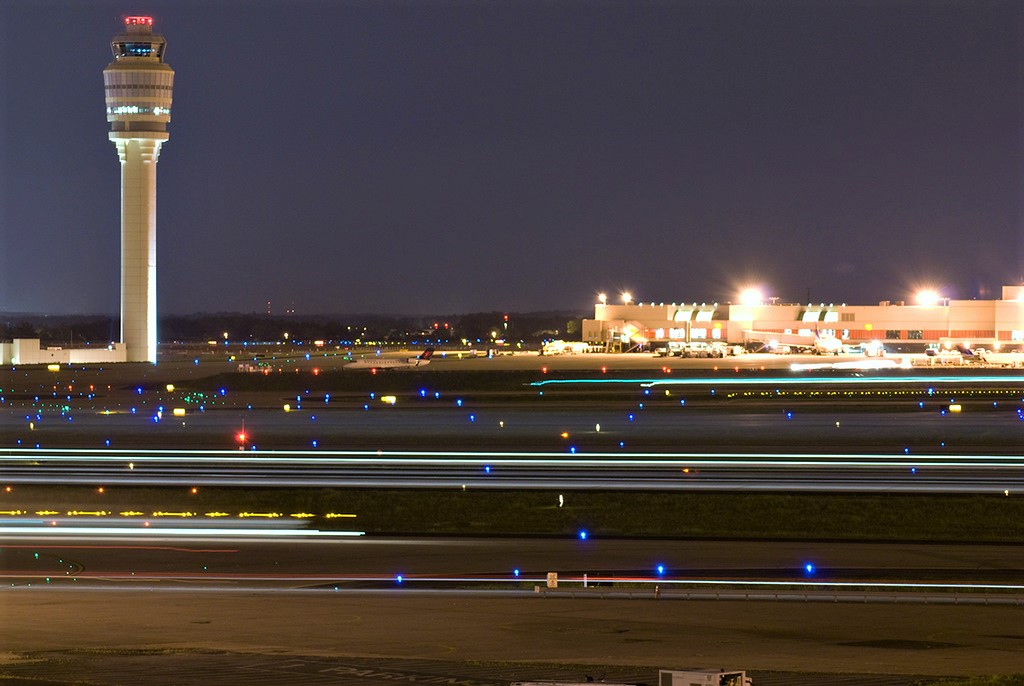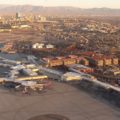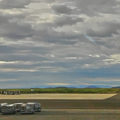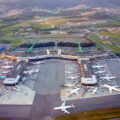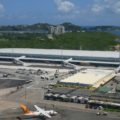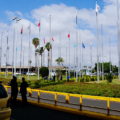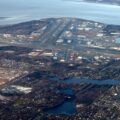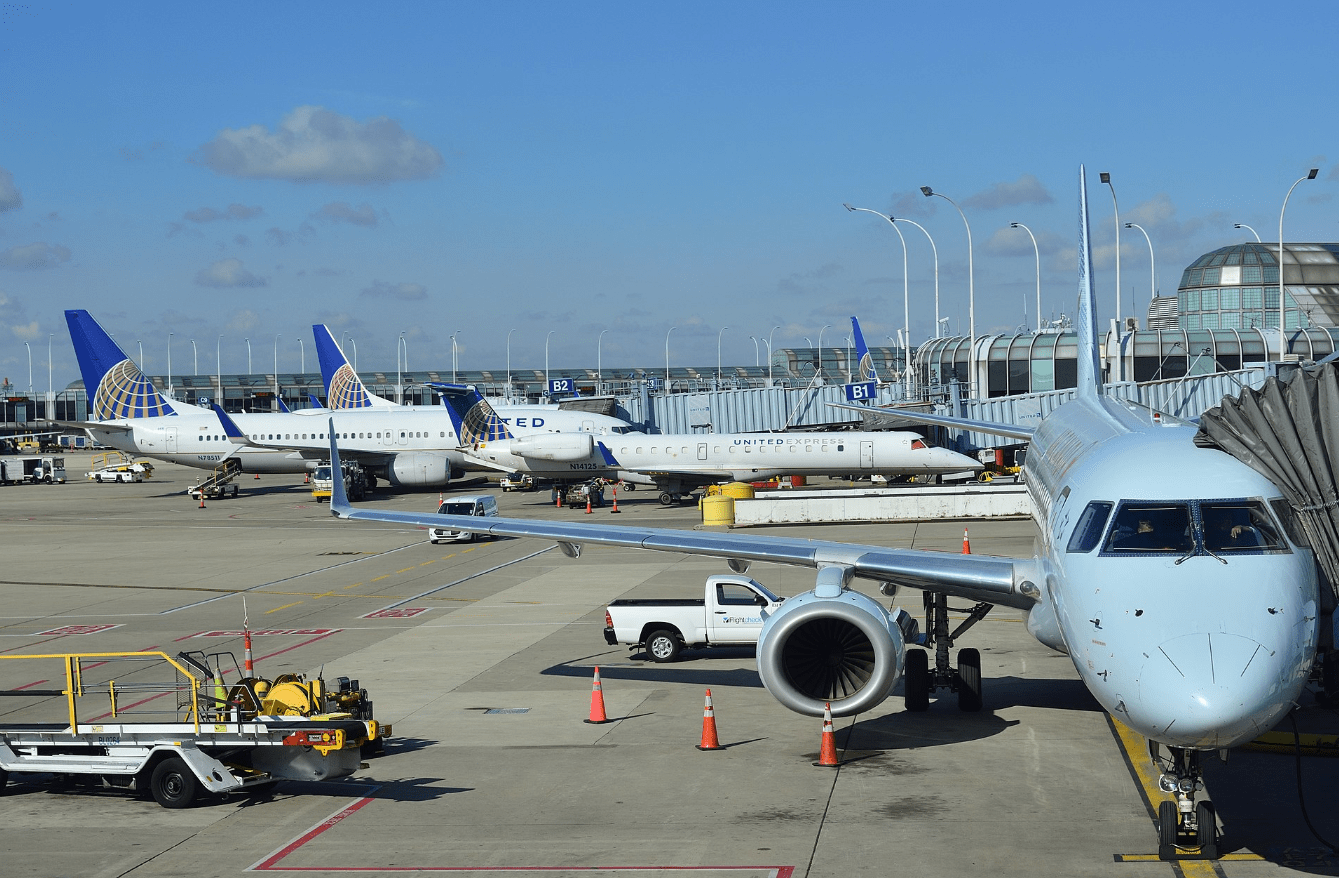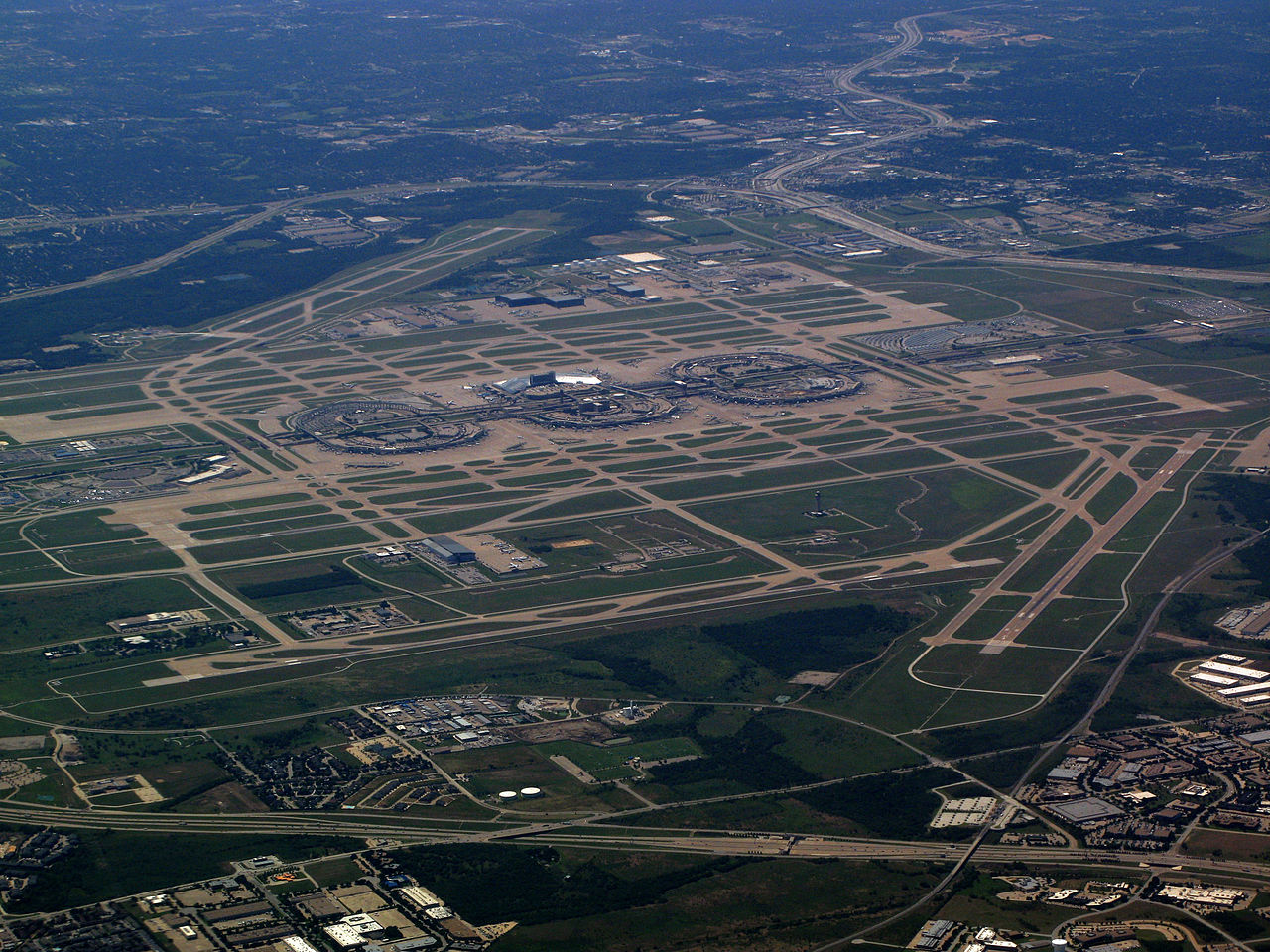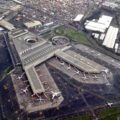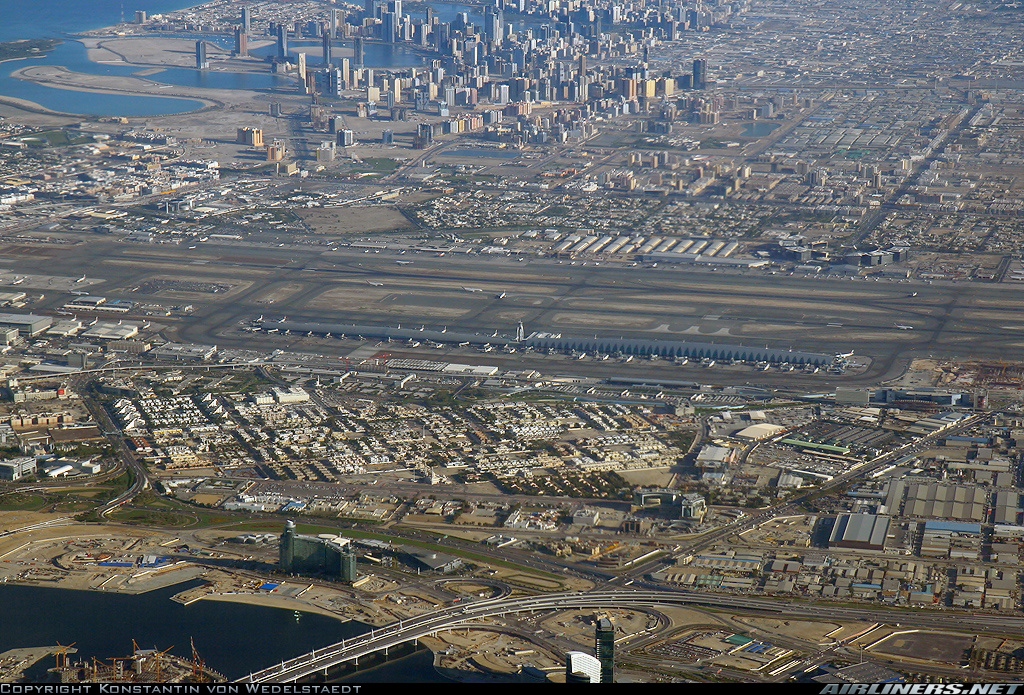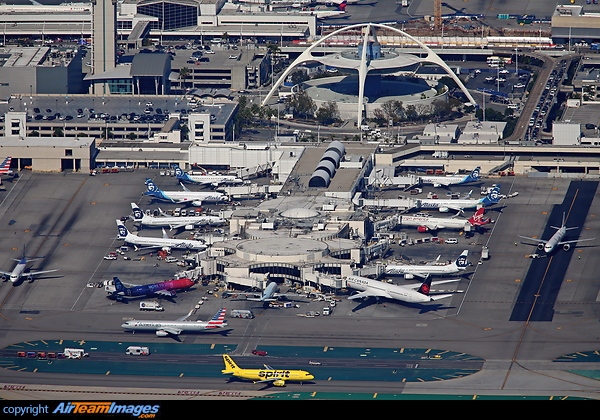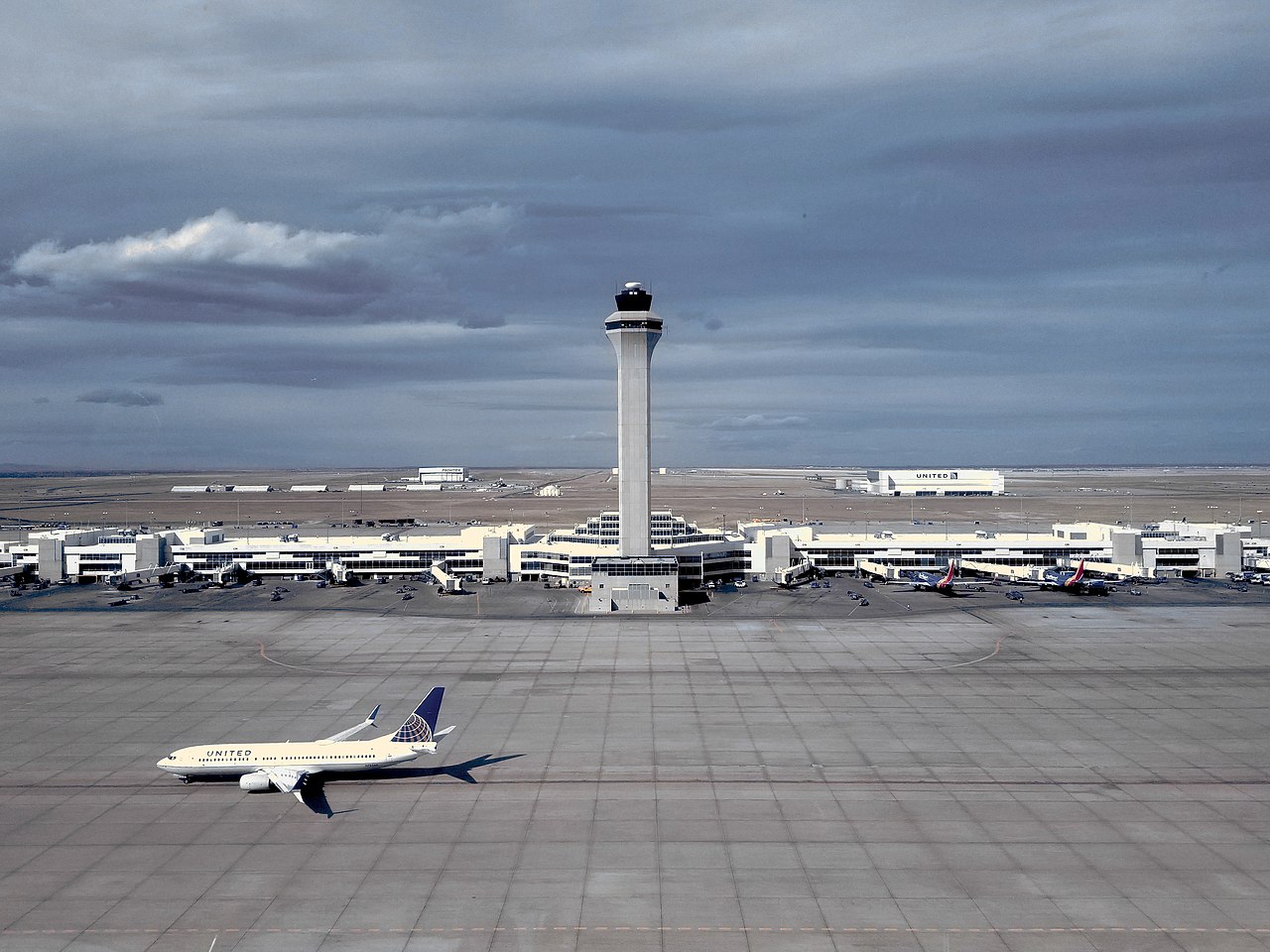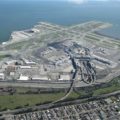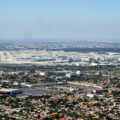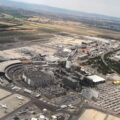Aviation
Boston Logan International Airport
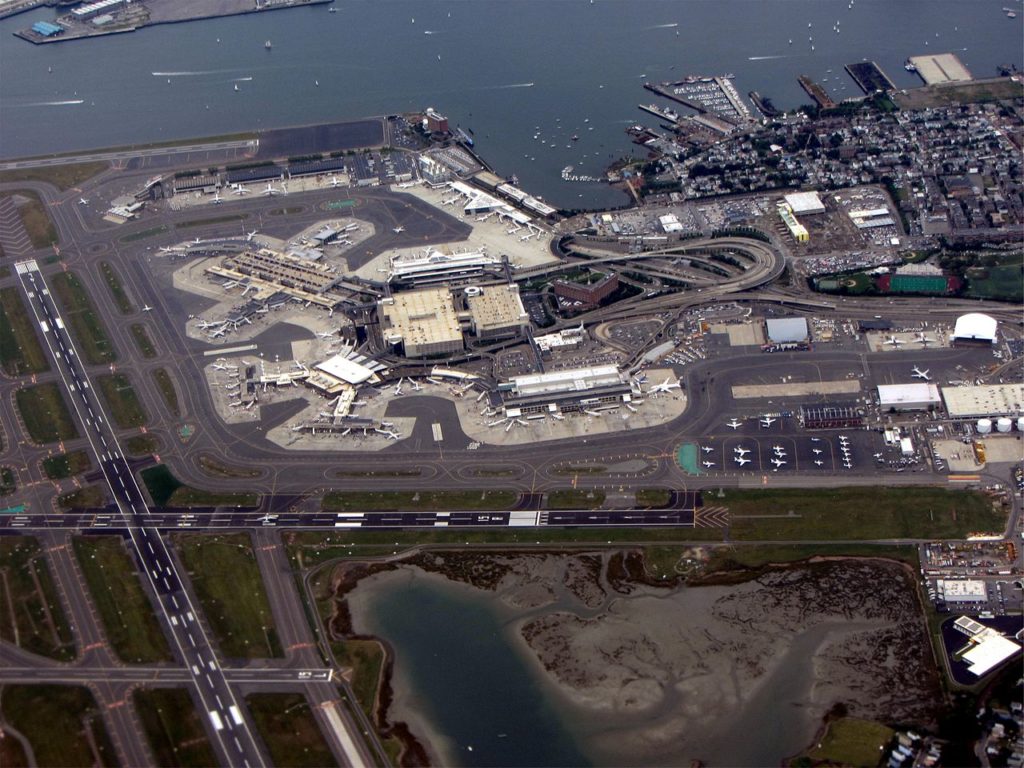
Source: Flickr: 20120909 027 Boston
| IATA: BOS ICAO: KBOS FAA LID: BOS WMO: 72509 | |
| Airport type | Public |
| Owner | Massachusetts Port Authority (Massport) |
| Serves | The Boston metropolitan area |
| Location | East Boston and Winthrop, Massachusetts, U.S. |
| Hub for | Cape Air Delta Air Lines |
| Focus city for | JetBlue |
| Elevation AMSL | 19.1 ft / 6 m |
| Coordinates | |
| Website | www.massport.com/logan-airport |
General Edward Lawrence Logan International Airport (IATA: BOS, ICAO: KBOS, FAA LID: BOS), also known as Logan International Airport, and also commonly known as Boston Logan, Logan Airport or simply Logan, is an international airport that is located mostly in East Boston and partially in Winthrop, Massachusetts, United States. It opened in 1923, covers 2,384 acres (965 ha), has six runways and four passenger terminals, and employs an estimated 16,000 people. It is the largest airport in both the Commonwealth of Massachusetts and the New England region in terms of passenger volume and cargo handling, as well as the 16th-busiest airport in the United States. The airport saw 42,522,411 passengers in 2019, the most in its history. It is named after General Edward Lawrence Logan, a 19th-century war hero native to Boston.
Logan has non-stop service to destinations throughout the United States, Canada, Mexico, Latin America, the Caribbean, the North Atlantic region (including Bermuda and the Azores), Europe, Africa, and Asia. The airport is a hub for Cape Air and Delta Air Lines as well as an operating base for JetBlue. American and United also carry out significant operations from the airport, including daily transcontinental flights. All of the major U.S. air carriers offer flights from Boston to all or the majority of their primary and secondary hubs.
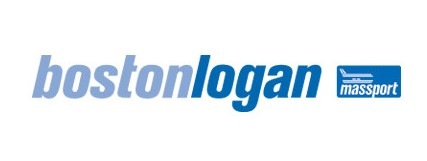

Modern international expansion and runway additions


Source: Daniel Schwen
Runway 14/32, Logan’s first major runway addition in more than forty years, opened on November 23, 2006. It was proposed in 1973, but was delayed in the courts. According to Massport records, the first aircraft to use the new airstrip was a Continental Express ERJ-145 regional jet landing on Runway 32, on the morning of December 2, 2006.
In April 2007, the FAA approved construction of a center field taxiway long-sought by Massport. The 9,300-foot (2,830 m) taxiway is between, and parallel to, Runways 4R/22L and 4L/22R. News of the project angered neighboring residents. In 2009 the taxiway opened ahead of schedule and under budget. To ensure the taxiway is not mistaken for a runway, “TAXI” is written in large yellow letters at each end.
A scene from the 2006 film The Departed was filmed at Logan, inside the connector bridge between Terminal E and the Central Parking Garage. Terminal C and several United Airlines and Northwest Airlines aircraft can be seen in the background. Parts of the Delta Air Lines 2007 “Anthem” commercial were filmed in Terminal A as well as the connector bridge between Terminal A and Central Parking.
In October 2009 US Airways announced it would close its Boston crew base in May 2010. The airline cited an “operations realignment” as the reason. Over 400 employees were transferred or terminated.
After starting service to Logan in 2004, JetBlue was a major operator at Logan Airport by 2008 and its largest carrier by 2011, with flights to cities throughout North America and the Caribbean.
The Airbus A380 first landed at Logan International Airport for compatibility checks on February 8, 2010. On March 26, 2017, British Airways began flying the A380 to Logan, operating the aircraft three times per week. British Airways announced in October 2018, that A380 service to Boston would expand to daily frequency during the summer 2019 season, beginning on March 31, 2019. Likewise, in January 2019, Emirates announced that it would be deploying the A380 on its daily flight between Logan and Dubai during the June–September 2019 summer season, as high peak seasonal services replacing the B777-300ER on that route. Emirates intends to utilise the A380 as a daily service once the market demand has been achieved.
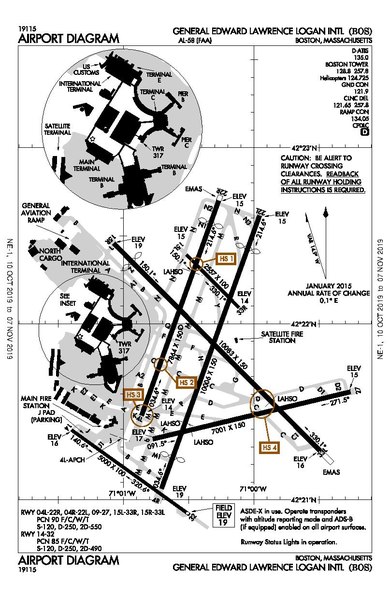

Source: Federal Aviation Administration
Facilities
Logan International Airport has four lettered passenger terminals, A, B, C, and E, and 102 gate positions total. With the exception of flights from destinations with U.S. Customs and Border Protection preclearance, inbound international flights arrive at Terminal E for customs screening since the other terminals do not have customs screening facilities. All terminals are connected by pre-security shuttle buses and by the SL1 branch of the MBTA Silver Line BRT, as well as between Terminals A, B, and E via pre-security moving walkways. Moving walkways also connect the terminals to a central parking garage designed for consolidated service between all four terminals and the garage itself.
Terminal A


between gates A6 and A7 viewing Terminal A Satellite
Source: Jesse Clark
Terminal A, which replaced a 1970s-era building once occupied by the now-defunct Eastern Air Lines (and later by its successor Continental Airlines until closed for demolition in 2002), opened to passengers on March 16, 2005. The terminal is primarily used by Delta for its hub operations and is divided into a main terminal and a satellite terminal, which are connected via an underground pedestrian tunnel under the ramp. The new redesigned Terminal A was developed under a special facility lease between Massachusetts Port Authority and Delta. On September 14, 2005, six months after opening, Delta filed for bankruptcy and consequently had to reduce the number of gates it leased. Terminal A features two Delta Sky Clubs. One is located on the third floor of the satellite building, and a newer one opened at the site of the former Continental Presidents Club in the main terminal building.
The building is the first airport terminal in the United States to be LEED certified for environmentally friendly design by the U.S. Green Building Council. Among the building’s features are heat-reflecting roof and windows, low-flow faucets and waterless urinals, self-dimming lights and stormwater filtration.
In December 2018, Delta announced an expansion of routes to take effect in 2019, which resulted in Southwest moving to Terminal B, and Delta regaining all of Terminal A (other than one gate subleased to WestJet, itself a codeshare airline with Delta). As a result, Delta has declared Logan to be one of their hubs as of June 2019.
Terminal B


Source: CaribDigita
Terminal B, designed by John Carl Warnecke & Associates and Desmond & Lord, Inc., opened in 1974. Pier B was completed for US Airways in 1974 and Pier A for American in 1975. The terminal remained largely unchanged until US Airways expanded its operations at Logan in 1979, and improvements designed by HNTB were constructed in 1980. From 1980 until 2000, numerous small projects including passenger seating area improvements, concessions expansions and passenger lounges were completed at both piers. American’s facilities were renovated in 1995 and redesigned by Gresham, Smith & Partners,] and US Airways’ facilities were renovated in 1998 and 2000, and redesigned by URS Corporation with Turner Construction serving as the construction manager.
Until 2014, Terminal B was split into north and south buildings, with a parking garage between the two buildings. The gates of the south building are divided into three groups. The gates of the north building are divided into two groups. Air Canada, Alaska Airlines, American, Southwest, Spirit, and United operate out of Terminal B. United and American both operate lounges in the terminal for their customers.
Between 2012 and 2014, Terminal B underwent a $160 million renovation, which was completed in April 2014. It created a post-security walkway that connects Terminal B North to Terminal B South. The renovation also included 24 new ticket counter spots, eight new departure lounges, new concession space, and a new baggage carousel. United, formerly located in Terminals A and C, began operating all flights out of Terminal B effective April 2014.
Terminal C


former designated hitter for the Boston Red Sox.
Source: Whoisjohngalt
Terminal C opened in 1967 and was designed by Perry, Shaw, Hepburn and Dean. It underwent renovations in 1987, 2002, and 2005. Continuing the renovations of Terminal C, a post-security connection between Terminal C and Terminal E opened in Summer 2016, allowing for seamless connections between the two terminals, part of Massport’s plan to ultimately connect all terminals post-security. The terminal serves Aer Lingus, Cape Air, JetBlue as their operating base, and Sun Country, with TAP Air Portugal only having departures take place out of the terminal.
The former Terminal D gates (the three gates at the north end of Terminal C) were renumbered and labeled as part of Terminal E in February 2006. These three gates were used, as part of Terminal E, by Southwest until their move to Terminal A. In 2016, following construction of an airside connector between Terminals E and C, these three gates were renumbered again.
The airport’s USO Lounge is located in the baggage claim area of Terminal C, lower level. It offers most typical amenities as other markets as major as Greater Boston. Military ID is mandatory.
Terminal E


Terminal E (Volpe International Terminal)
Source: hildgrim
Terminal E, also known as the John A. Volpe International Terminal named after the former Governor of Massachusetts and U.S. Secretary of Transportation, serves as the international terminal for Logan and therefore houses the majority of its international arrivals (excluding flights from an origin that has U.S. border preclearance). Also, most non-U.S. carriers excluding Aer Lingus, Air Canada, TAP Air Portugal, and WestJet depart from Terminal E. The terminal was completed in 1974, and designed by Kubitz & Papi, Inc. and Desmond & Lord, Inc. Massport completed the “Terminal E Modernization” project in August 1997 which improved the passenger facilities. The International Gateway Project, designed by Skidmore, Owings and Merrill and DMJM Aviation, added 410,000 square feet (38,000 m2) to the terminal in 2003, and the entire project was completed in 2008.
Terminal E has a total of 12 gates. All gates within the terminal are designated as common-use, meaning gates are assigned mostly based on an operational need, and no specific airline claims ownership of any of those gates. All ticket counters and gates in Terminal E are shared among the international carriers. Terminal E has several airline lounges (e.g., Air France Lounge, British Airways’ First Lounge and Terraces Lounge, Lufthansa’s First Lounge and Business Lounges, Virgin Atlantic’s Clubhouse Lounge). The third level of Terminal E is used for departures, the second for passport control via U.S. Customs and Border Protection, and the ground level for arrivals and customs, also via U.S. Customs and Border Protection. The Federal Inspection Station located in Terminal E is capable of processing over 2,000 passengers per hour.
Terminal E underwent a $100 million renovation which started in 2014, and includes a post-security connector between Terminals E and C (opened summer 2016), improved immigration and passport control kiosks, and gates capable of serving the Airbus A380. The Terminal E expansion was completed in late January 2017.
In summer 2019, Massport began another expansion project on Terminal E, due to continued growth at the airport. The project, which is slated to be completed in early 2023, will include the addition of 7 new international gates which will stretch into the current North Cargo area. Additionally, a new TSA checkpoint will be built and the current ticketing, customs, and baggage claim areas will all be expanded. In total, the project is expected to cost $680 million and incorporate roughly 400,000 square feet (37,000 m2) of new space.
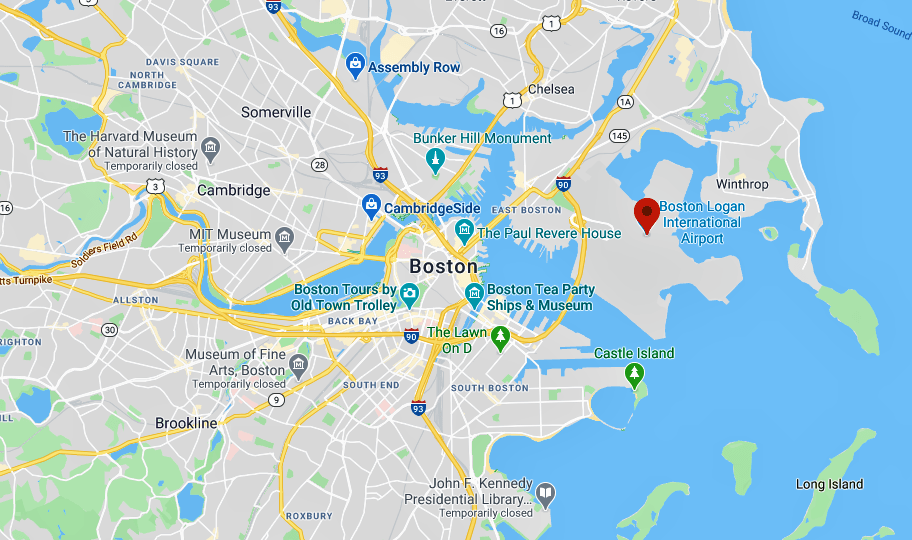

Runways


Source: BOS airport diagram.svg:
Located partly in East Boston and partly in the Town of Winthrop, on Boston Harbor, Logan International Airport covers an area of 2,384 acres (965 ha) which contains six runways:
- Runway 4L/22R: 7,864 ft × 150 ft (2,397 m × 46 m)
- Runway 4R/22L: 10,006 ft × 150 ft (3,050 m × 46 m)
- Runway 9/27: 7,001 ft × 150 ft (2,134 m × 46 m)
- Runway 14/32: 5,000 ft × 100 ft (1,524 m × 30 m)
- Runway 15L/33R: 2,557 ft × 100 ft (779 m × 30 m)
- Runway 15R/33L: 10,083 ft × 150 ft (3,073 m × 46 m)
Between 1968 and 1971, Taxiway Sierra was converted into STOL runway 18/36, which was 1,800 ft (550 m) for use by Eastern Air Lines’s STOL capable Breguet 941 turboprop shuttle.
Instrument landing system approaches are available for runways 4R, 15R, 22L, 27, and 33L, with runways 4R and 33L certified for CAT III operations. The other runways with ILS are certified for CAT I Instrument Landing operations. EMAS pads are located at the starting thresholds of runways 22R and 33L.


Source: Doc Searls from Santa Barbara, USA
The distinctive central control tower, nearly a dozen stories high, is a local landmark with its pair of segmented elliptical pylons and a six-story platform trussed between them.
Logan Airport has two cargo facilities: North Cargo is adjacent to Terminal E and South Cargo adjacent to Terminals A and B. North Cargo is also the location of several maintenance hangars, including those operated by American Airlines, Delta Air Lines, and JetBlue.
Runway 14/32, which opened to air traffic on November 23, 2006, is unidirectional. Runway 32 is used for landings and 14 is used for takeoffs. Massport is barred by a court order from using the runway for overland landings or takeoffs, except in emergencies.
There was fierce opposition towards the construction of 14/32 among communities adjacent to the northwest side of the airport, such as Chelsea and East Boston, as authorities acknowledged these areas would likely see increased noise levels. Many Residents of Winthrop and Revere also joined in opposition, even though Massport had predicted the new traffic patterns allowed by 14/32 would actually reduce overflights and noise in those areas.
Since the opening of the new runway, there has been disagreement about when and how often it should operate. Residents have demanded a minimum of 11.5-knot (21.3 km/h) northwest winds, slightly higher than the 10-knot (19 km/h) threshold favored by Massport.
The rationale behind constructing the new runway 14/32 was that it reduces the need for improving existing Runway 15L/33R, which, at only 2,557 feet (779 m) is among the shortest hard-surface runways at major airports in the United States. In 1988, Massport had proposed an 800-foot (240 m) extension to 15L/33R (a project which would have required additional filling-in some land along a “clam bed”), but was thwarted by a court injunction.
Boston’s Hyatt Harborside Hotel, which sits only a few hundred yards from the runway threshold, was built primarily to prevent Massport from ever extending the length of 14/32 or using it for takeoffs or landings over the city. Massachusetts state legislators carefully chose the location of the hotel—directly in the runway centerline—prior to its construction in 1992.
Ground transportation


at Airport station; the southbound platform is on the right side of the image.
Source: Fletcher6
Boston Logan International Airport has the accolade of “Easiest Airport to Get To” in a 2007 article on aviation.com because of the variety of options to/from the airport. These options include cars, taxis, the MBTA Blue and Silver lines, regional bus services, shared ride vans, ferries, limousines and an in-house airport operator (Massport) intercity bus common carrier, a service offered by few U.S. airports. The service, Logan Express, is essentially Massport’s equivalent to services such as Greyhound Lines, and can transport people between all four terminals at Logan and Back Bay, Braintree, Framingham, Peabody, or Woburn. Logan is 2.5 miles (4.0 km) northeast of Back Bay, a short distance compared with airports relative to their distance to an equivalent downtown in other major U.S. cities.
By public roads, the airport is accessible via Exit 26 of the Massachusetts Turnpike (Interstate 90, colloquially MassPike), near its eastern terminus, which provides easy access from the west via the Ted Williams Tunnel. East of Exit 26, I-90 transitions to Route 1A to Revere, Lynn, and points north, as well as New Hampshire. From the south, travelers on Interstate 93 can connect to the MassPike east, through the Ted Williams Tunnel and take exit 26 to reach the airport. From the north, I-93 traffic to the airport uses the Callahan Tunnel, Route 1A North. Additionally, road traffic from most of downtown Boston, Back Bay, Fenway Park and its surrounding district, or Boston University uses the Callahan Tunnel. The westbound tunnel parallel to the Callahan Tunnel is known as the Sumner Tunnel. From the North Shore, access is via Route 1A South.
Massport’s Airport Shuttle provides free service between all terminals, the Airport station on the Blue Line and the Rental Car Center, as well as additional service to the water transportation dock located on Harborside Drive.
Statistically the two major ride-sharing transportation network companies (TNC) serving Logan International are Lyft and Uber. These providers in agreement with MassPort use only specially catered pick-up or drop-off points at the airport. Due to sheer volume of users who use the providers, both have been known to use mass-messaging of their customer base to galvanize political pressure and act on a pressure group towards Logan management at MassPort concerning various policies that can impact those providers.
The SL1 branch of the MBTA’s Silver Line bus rapid transit service connects all Logan terminals with South Station, a major transportation hub in the downtown Boston financial district that serves MBTA Commuter Rail, Amtrak, Red Line subway and intercity bus.[83] Airport station on the MBTA’s Blue Line subway, despite its name, is not in the airport terminal itself; free shuttle buses carry passengers between the Airport station and the terminal buildings. The Blue Line connects with the Orange Line at State, which provides service to both North Station and Back Bay Station the two other major rail transportation hubs for Boston. A transfer to the Green Line, which also runs to North Station, is available at Government Center station. The SL3 branch of the Silver Line connects Chelsea with the Airport Station. As of 2019, Massport is considering the construction of either an automated people-mover or rapid transit line to replace the airport shuttle.
A 120,000 sq ft (11,000 m2) $310 million rental car center opened on September 24, 2013, consolidating all rental car companies into one shared building. Advantage, Alamo, Avis, Budget, Dollar, Enterprise, E-Z Rent-A-Car, Hertz, National and Thrifty rental car companies operate out of the new facility which has 3,200 parking spaces across four levels. Access to the new facility is done through a new unified bus system consisting of 28 fuel efficient clean hybrid buses operated by Massport which provides service between all the terminals and the rental car center. A handful of livery-plate operators also service the airport offering various chauffeured car, van, or limousine for-hire offerings.
Public safety
Police services are provided by the Massachusetts State Police Troop F. Fire protection is the responsibility of the Massport Fire Rescue. Even though the airport is technically within city limits, under Massachusetts state law municipal police such as the Boston Police Department do not have jurisdiction on Massport property.
A 250-foot security zone, established in 2002, surrounds the waters around the airport which are marked by 29 buoys indicating the restricted area. The area is patrolled by the Massachusetts State Police, the Boston Police Department, the Massachusetts Environmental Police, the United States Coast Guard and the Boston and Winthrop Harbormasters. Anyone who enters the zone for non-emergency purposes is subject to prosecution and is entered into a State Police database that tracks offenders.
Other facilities


in the United States, opening originally in 1951 in another part of the airport.
Source: TUFKAAP
Currently, major air cargo companies such as British Airways World Cargo, Lufthansa Cargo, Cathay Pacific Cargo, Martinair Cargo, China Airlines Cargo, EVA Air Cargo and many more cargo carriers have cargo offices on Airport property. Also, American Airlines, Delta and JetBlue have maintenance hangars at the airport, all located adjacent to the office building near Terminal E and the North Cargo Terminal. Delta TechOps is Delta Air Lines primary maintenance, repair and overhaul arm.
Also located on the property is the Amelia Earhart General Aviation Terminal which is located near Runway 14/32 and next to the Massport Fire Rescue headquarters. The terminal was built in 1980, and dedicated to former Boston resident Earhart in 1984. Until 2006, American Eagle flights flew out of the terminal when all flights were consolidated in the former B22-29 gates in Pier A, the north building of Terminal B. Passengers had to take a shuttle bus from Terminal B to the Earhart Terminal. The terminal currently sits mostly unused.
Terminal C is home to the airport’s chapel, Our Lady of the Airways. Opened in 1951, it is considered the first airport chapel in the United States. The chapel was originally Catholic, but is now non-denominational.
Airlines and destinations
Passenger
| Aer Lingus | Dublin, Shannon | |
| Air Canada | Seasonal: Calgary (begins June 22, 2020), Toronto–Pearson, Vancouver | |
| Air Canada Express | Halifax, Montréal–Trudeau, Ottawa, Toronto–Pearson | |
| Air France | Paris–Charles de Gaulle | |
| Alaska Airlines | Los Angeles, Portland (OR), San Diego, San Francisco, Seattle/Tacoma | |
| Alitalia | Rome–Fiumicino | |
| Allegiant Air | Seasonal: Asheville, Destin/Fort Walton Beach, Grand Rapids, Knoxville | |
| American Airlines | Austin (begins August 18, 2020), Charlotte, Chicago–O’Hare, Dallas/Fort Worth, London–Heathrow (resumes October 24, 2020), Los Angeles, Miami,New York–JFK, New York–LaGuardia, Philadelphia, Phoenix–Sky Harbor, Washington–National Seasonal: Cancún, Grand Cayman, Jackson Hole (begins December 19, 2020), Montego Bay, Nassau, Providenciales, Punta Cana | |
| American Eagle | Harrisburg, Indianapolis (begins July 7, 2020), Raleigh/Durham (begins July 7, 2020), Rochester (NY), Syracuse Seasonal: Key West, Wilmington (NC) (begins July 11, 2020) | |
| Azores Airlines | Ponta Delgada, Terceira | |
| Boutique Air | Massena | |
| British Airways | London–Heathrow | |
| Cabo Verde Airlines | Praia, Sal | |
| Cape Air | Augusta (ME), Bar Harbor, Hyannis, Lebanon, Martha’s Vineyard, Nantucket, Portland (ME), Provincetown, Rockland, Rutland, Saranac Lake/Lake Placid | |
| Cathay Pacific | Hong Kong | |
| Copa Airlines | Panama City | |
| Delta Air Lines | Amsterdam, Atlanta, Austin, Bermuda, Cincinnati, Detroit, Fort Lauderdale, Fort Myers, Las Vegas, London–Heathrow, Los Angeles, Miami, Minneapolis/St. Paul, New York–JFK, New York–LaGuardia, Orlando, Paris–Charles de Gaulle, Raleigh/Durham, Salt Lake City, San Francisco, Seattle/Tacoma, Tampa, West Palm Beach Seasonal: Aruba, Cancún, Charleston (SC), Dublin, Edinburgh, Lisbon, Montego Bay, Nassau, Providenciales, Punta Cana, St. Thomas | |
| Delta Connection | Buffalo, Charleston (SC), Chicago–O’Hare, Cincinnati, Cleveland, Columbus–Glenn, Indianapolis, Jacksonville (FL), Kansas City, Memphis (resumes October 4, 2020), Milwaukee, Nashville, Newark, New York–JFK, New York–LaGuardia, Norfolk, Philadelphia, Pittsburgh, Raleigh/Durham, Richmond, Savannah, Washington–National Seasonal: Fort Myers, Myrtle Beach, New Orleans, Sarasota, West Palm Beach | |
| El Al | Tel Aviv | |
| Emirates | Dubai–International | |
| Frontier Airlines | Fort Myers (begins July 3, 2020), Miami, Orlando, Raleigh/Durham, San Juan, Tampa (begins July 2, 2020) Seasonal: Denver, Philadelphia | |
| Hainan Airlines | Beijing–Capital, Shanghai–Pudong | |
| Hawaiian Airlines | Honolulu | |
| Iberia | Madrid | |
| Icelandair | Reykjavík–Keflavík | |
| Japan Airlines | Tokyo–Narita | |
| JetBlue | Aruba, Atlanta, Austin, Baltimore, Barbados, Bermuda, Buffalo, Burbank, Cancún, Charleston (SC), Charlotte, Chicago–O’Hare, Cleveland, Dallas/Fort Worth, Denver, Detroit, Fort Lauderdale, Fort Myers, Havana, Houston–Intercontinental, Jacksonville (FL), Las Vegas, Long Beach, Los Angeles, Minneapolis/St. Paul, Montego Bay, Nashville, Nassau, Newark, New Orleans, New York–JFK, New York–LaGuardia, Orlando, Philadelphia, Phoenix–Sky Harbor, Pittsburgh, Punta Cana, Raleigh/Durham, Richmond, Rochester (NY), Salt Lake City, San Diego, San Francisco, San Jose (CA), San Juan, Santiago de los Caballeros, Santo Domingo–Las Américas, Savannah, Seattle/Tacoma, Syracuse, Tampa, Washington–National, West Palm Beach Seasonal: Bozeman (resumes June 13, 2020), Grand Cayman, Hayden/Steamboat Springs, Liberia (CR), Martha’s Vineyard, Nantucket, Palm Springs, Port-au-Prince, Portland (OR), Providenciales, Puerto Plata, Sacramento, Sarasota, St. Lucia–Hewanorra, St. Maarten, St. Thomas | |
| KLM | Amsterdam | |
| Korean Air | Seoul–Incheon | |
| LATAM Brasil | São Paulo–Guarulhos | |
| Level | Barcelona | |
| Lufthansa | Frankfurt, Munich | |
| Norwegian Air Shuttle | London–Gatwick Seasonal: Madrid, Paris–Charles de Gaulle, Rome–Fiumicino | |
| Porter Airlines | Toronto–Billy Bishop | |
| Qatar Airways | Doha | |
| Royal Air Maroc | Casablanca | |
| Scandinavian Airlines | Copenhagen | |
| Silver Airways | Seasonal: Bar Harbor | |
| Southwest Airlines | Baltimore, Chicago–Midway, Columbus–Glenn, Denver, Fort Lauderdale, Houston–Hobby, Nashville, St. Louis Seasonal: Austin, Dallas–Love, Indianapolis (resumes August 15, 2020), Milwaukee (resumes August 15, 2020), New Orleans, Orlando (resumes August 15, 2020), Tampa | |
| Spirit Airlines | Atlanta, Fort Lauderdale, Las Vegas, Myrtle Beach, New Orleans, Orlando, San Juan Seasonal: Baltimore, Chicago–O’Hare, Cleveland, Dallas/Fort Worth, Detroit, Fort Myers, Tampa, West Palm Beach | |
| Sun Country Airlines | Seasonal: Madison, Minneapolis/St. Paul | |
| Swiss International Air Lines | Zurich | |
| TAP Air Portugal | Lisbon, Ponta Delgada (resumes July 1, 2020) | |
| Tradewind Aviation | White Plains | |
| Turkish Airlines | Istanbul | |
| United Airlines | Chicago–O’Hare, Denver, Houston–Intercontinental, Los Angeles, Newark, San Francisco, Washington–Dulles | |
| United Express | Chicago–O’Hare, Newark, Washington–Dulles | |
| Virgin Atlantic | London–Heathrow | |
| VivaAerobús | Seasonal charter: Cancún (operating for Apple Vacations) | |
| WestJet | Seasonal: Calgary | |
| WestJet Encore | Toronto–Pearson |
Cargo
Logan Airport is a medium-sized airport in terms of cargo, handling 684,875 tons of freight in 2012, making it the 10th busiest airport in the U.S. in terms of cargo. It handles many U.S.-based cargo airlines, including DHL Aviation, FedEx Express and UPS Airlines. It also has cargo offices for many international cargo carriers, including British Airways World Cargo, Cathay Pacific Cargo, China Airlines Cargo, EVA Air Cargo, LATAM Cargo Chile and Saudia Cargo. It has two cargo complexes: the North Cargo Terminal, located near Terminal E, and South Cargo, located near Terminal A. Given that the airport is the 10th busiest cargo facility in the country, with many companies operating at the airport, it has been recognized that future expansion of cargo from Logan is limited due to constrained physical space for expansion.
| Airlines | Destinations |
|---|---|
| Atlas Air | Cincinnati/Northern Kentucky |
| FedEx Express | Indianapolis, Memphis, Newark |
| UPS Airlines | Louisville, Philadelphia |
Accidents and incidents
Accidents
- On October 4, 1960, Eastern Air Lines Flight 375, a Lockheed L-188 Electra crashed into the sea while attempting to take off from Logan Airport. 62 people died and 10 people survived, incurring serious injuries.
- On November 15, 1961, A Vickers Viscount N6592C of Northeast Airlines was written off when it collided with a Douglas DC-6 N8228H of National Airlines after landing at Logan International Airport. The DC-6 had started to take-off without receiving clearance to do so.
- On March 10, 1964, a Slick Airways DC-4 crashed 2.1 km (1.3 miles) southwest of Logan whilst on final approach. All three occupants were killed. Loss of control due to accumulation of ice on the horizontal stabilizer causing the aircraft to pitch down was the probable cause.
- On July 31, 1973, Delta Air Lines Flight 723, a McDonnell Douglas DC-9, crashed into the seawall, causing the deaths of all 83 passengers and 6 crew members on board. One of the passengers initially survived the accident but later died in a hospital.
- On November 3, 1973, Pan Am Flight 160, a Boeing 707-321C cargo aircraft, crashed on approach to Boston-Logan. Smoke in the cockpit caused the pilots to lose control. All three crewmembers died in the accident.
- On December 17, 1973, Iberia Airlines Flight 933 from Madrid Barajas International Airport collided with the ALS system 500 feet short of the runway threshold, critically damaging the front landing gear and causing it to collapse. The aircraft came to a rest 300 feet (91 m) short of the runway. All 168 onboard survived, however the aircraft was written off and was the first hull loss of a DC-10.
- On January 23, 1982, World Airways Flight 30 from Newark to Boston made a non-precision instrument approach to runway 15R and touched down 2,800 feet (850 m) past the displaced threshold on an icy runway. When the crew sensed that the DC-10-30-CF couldn’t be stopped on the remaining runway, they steered the DC-10 off the side of the runway to avoid the approach light pier, and slid into the shallow water of Boston Harbor. The nose section separated as the DC-10 came to rest 250 feet (76 m) past the runway end, 110 feet (34 m) left of the extended centerline. Two passengers (a father and son) were never found and are presumed to have been swept out to sea.
Incidents
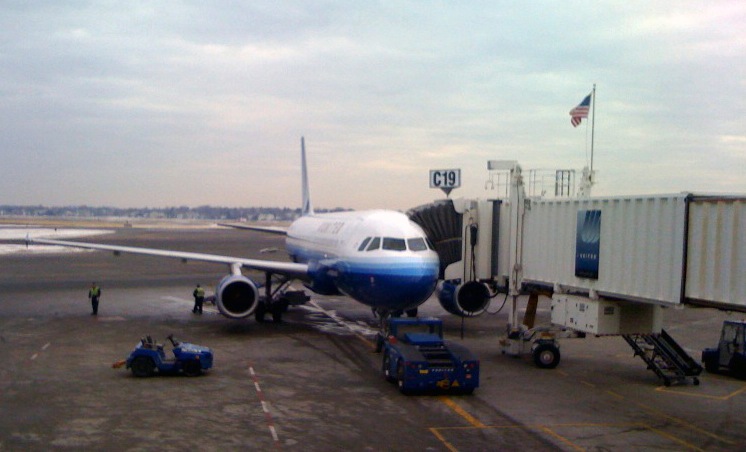

Source: Jeremy Kemp
- On October 2, 1954, a Massachusetts Air National Guard F94 Starfire experienced engine failure and crashed near Logan Airport. Its pilot, First Lieutenant James O. Conway sacrificed his life by veering the plane into an embankment on Bayswater Street in East Boston. A memorial was placed nearby.
- On July 2, 1976, an unoccupied Eastern Airlines L-188 Electra parked at Boston Logan Airport was destroyed by a bomb planted in the landing gear compartment. No one was injured.
- On September 11, 2001, the two aircraft hijacked in the September 11, 2001 attacks that were flown into, and ultimately destroyed the Twin Towers of the World Trade Center was located in the World Trade Center site in Financial District in Lower Manhattan in New York City, New York – American Airlines Flight 11 and United Airlines Flight 175 – both originated at and departed from Logan. American flags now fly over gates B32 and C19, the respective gates that the two planes pushed back from.
- On June 9, 2005, US Airways Flight 1170 and Aer Lingus Flight 132 narrowly avoided collision when they were cleared for takeoff nearly simultaneously on intersecting runways by two different controllers. The crew of the US Airways flight spotted the oncoming Aer Lingus jet and avoided a collision by keeping their own aircraft on the runway past their normal rotation point, allowing the Aer Lingus flight to pass over them. Both flights lifted off safely and continued to their destinations without further incident.
- On January 7, 2013, ground crew workers noticed smoke coming out from the battery compartment in a parked Japan Airlines Boeing 787 Dreamliner at the gate. This fire was caused by overcharged lithium-ion batteries, eventually leading to the grounding of the worldwide Boeing 787 fleet and subsequent redesign of the battery systems.
Alternate airports
The two historically known alternative airports to Logan are both located outside the Commonwealth of Massachusetts: Manchester–Boston Regional Airport in Manchester, New Hampshire, located approximately 53 statute miles (85 km) north-northwest of Logan, which converts to an average drive time of 62 minutes via I-90 and I-93; and T. F. Green Airport in Warwick, Rhode Island, located 60 statute miles (97 km) south-southwest of Logan, averaging 76 minutes from Logan via I-90, I-93 and I-95, or a 100-minute ride via the Silver Line SL1 bus to South Station and then the Providence/Stoughton Line commuter rail to T. F. Green Airport station.[168] Massport does not operate these facilities.
Worcester Regional Airport in Worcester, which is also operated by Massport, also serves as an alternative to Logan, albeit known more recently as such. Currently, JetBlue Airways, American Airlines, and Delta Air Lines are the only commercial airlines providing service to Worcester. In late 2017, the airport finished construction on a Category IIIb Landing System that will allow for arrivals and departures in virtually all weather conditions. The increased reliability, which has been the main concern for airlines operating at the notoriously foggy airport over the years, is expected to draw additional service. The airport is located 47 statute miles (76 km) due west of Logan, primarily accessed via Interstates I-90 and I-290.
Source: wikipedia
